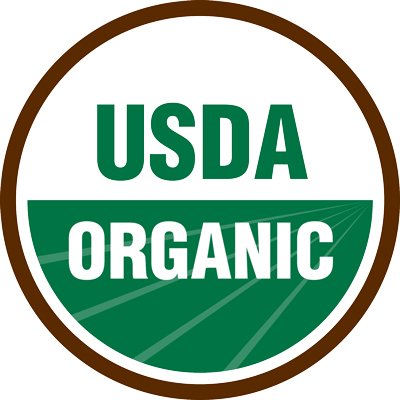Why Buy Organic (Part 2)
Last week, we explained true cost economics and the health benefits associated with organics in Why Buy Organic (Part 1). We continue the discussion below with information about the environmental advantages of organics and concerns surrounding GMO foods.
Environmental Advantages
From pesticide use to soil and water management, organic farming methods work with natural cycles and are overwhelmingly better for the environment. Conventional, industrial agriculture is responsible for 20-30% of all man-made greenhouse gases, with chemical fertilizers and confined animal feedlots contributing more greenhouse gas than all transportation combined. On the other hand, organically managed soils can actually convert carbon from a greenhouse gas to a helpful, food-producing benefit. This is because organic growers utilize compost application on fields, rotational grazing practices with livestock, as well as the growing of windrows and cover crops, all of which help the soil sequester carbon. Carbon sequestration works through photosynthesis – plants draw carbon out of the air and whatever the plant doesn't use for growth is transferred through the plant roots to the soil via fungi. And while some carbon sequestration happens in conventional farming, organic methods produce 20% higher levels of soil carbon on average. Carbon is the main component of soil organic matter and its presence improves soil structure, fertility, and the ability to retain water, which makes it more resilient to drought and flood.
Beyond the ability to effectively sequester carbon, conventional methods wreak havoc on the environment in other ways: chemical fertilizer run off creates dead zones in oceans, drastic loss of honeybees and native pollinators from pesticide use, soil erosion from practices like tilling and over-grazing, along with so many other disadvantages. When we choose to buy organic, we are saying no to the harmful methods of industrial agriculture, and yes to healthier, more vibrant ecosystems.
Non-GMO
And last but certainly not least, is the issue of genetically modified organisms (GMOs) in the food supply. The vast majority of GMO crops have been engineered specifically to withstand the use of herbicides and pesticides. In other words, these crops have been modified to survive the use of toxic chemicals which would otherwise kill the plants.
More than 60 countries around the globe enforce restrictions or bans on the use of GMOs, but the US government has approved their use based on preliminary studies conducted by the very companies that engineer and profit from GMOs. Due to the fact that GMOs have not been thoroughly tested to assess the long term effects on human health and the natural ecosystems they could potentially disrupt, there is growing concern amongst consumers and scientists worldwide regarding GMO crops. Recent polls in the US show up to 90% of Americans in favor of labeling GMO products. But currently, the US government does not require GMO goods to be labeled at all, though companies can voluntarily choose to use a third-party like the Non-GMO Project to certify that their products are GMO-free. To make the search for non-GMO products simple, just choose organic. The USDA regulations prohibit the use of GMOs in organic agriculture, so organics are always GMO-free.
So why buy organic? Because the organic label speaks to the quality and sustainability of our food. Because the organic label supports farmers and good farming practices. Because buying organic is a small price to pay for our health and the health of the environment we live in and share with other living things.
If you do just one thing – make one conscious choice – that can change the world, go organic. Buy organic food. Stop using chemicals and start supporting organic farmers. No other single choice you can make to improve the health of your family and the planet will have greater positive repercussions for our future.
– Maria Rodale, Organic Manifesto

